 W
WAbbotsbury Abbey, dedicated to Saint Peter, was a Benedictine monastery in the village of Abbotsbury in Dorset, England. The abbey was founded in the 11th century by King Cnut's thegn Orc and his wife Tola, who handsomely endowed the monastery with lands in the area. The abbey prospered and became a local centre of power, controlling eight manor houses and villages. During the later Middle Ages, the abbey suffered much misfortune. In the time of the dissolution of the monasteries, the last abbot surrendered the abbey and the site became the property of Sir Giles Strangways.
 W
WAbingdon School is a day and boarding independent school for boys in Abingdon, Oxfordshire, England. The twentieth oldest independent British school, it celebrated its 750th anniversary in 2006. The school was described as "highly selective, strongly academic" in The Tatler School Guide.
 W
WAshdown Forest is an ancient area of open heathland occupying the highest sandy ridge-top of the High Weald Area of Outstanding Natural Beauty. It is situated some 30 miles (48 km) south of London in the county of East Sussex, England. Rising to an elevation of 732 feet (223 m) above sea level, its heights provide expansive vistas across the heavily wooded hills of the Weald to the chalk escarpments of the North Downs and South Downs on the horizon.
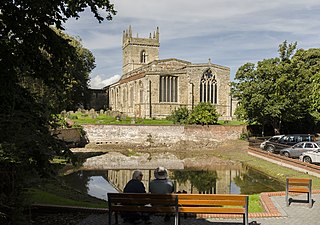 W
WSt Mary's Church is an Anglican church and Grade I Listed building in Barton-upon-Humber, North Lincolnshire, England.
 W
WSt Mary's Priory, Binham, or Binham Priory, is a ruined Benedictine priory located in the village of Binham in the English county of Norfolk. Today the nave of the much larger priory church has become the Church of St. Mary and the Holy Cross and is still used as a place of worship. The remains of the priory are in the care of English Heritage. The abbey's west face is the first example in England of gothic bar tracery, predating Westminster Abbey by a decade.
 W
WBytham Castle was a castle in the village of Castle Bytham in Lincolnshire
 W
WSt Mary Magdalene, Campsall, is a parish church in the Church of England in Campsall in South Yorkshire. It is Grade I listed. There is a service every Sunday at 11.00.
 W
WChatteris Abbey in Chatteris in the Isle of Ely, Cambridgeshire was founded as a monastery for Benedictine nuns in 1016 by Ednoth, Bishop of Dorchester. Before 1310 much of the monastery was destroyed by fire. By the middle of the 14th century, some of the local families appear to have been using the nave of the monastic church as their parochial church.
 W
WErringham chapel is a former place of worship in the deserted medieval village of Old Erringham, north of Shoreham-by-Sea in the district of Adur, one of seven local government districts in the English county of West Sussex. Founded in the 11th century as a chapel of ease to St Nicolas' Church in the Saxon riverside village of Old Shoreham, it was in use for several centuries until depopulation caused Old Erringham to become unviable as a settlement. The chapel fell into ruin, and its remains have been incorporated into a barn on the farm which now occupies the site of the village. English Heritage has listed the remaining structure at Grade II for its architectural and historical importance.
 W
WGloucester Abbey was a Benedictine abbey in the city of Gloucester, England. Since 1541 it has been Gloucester Cathedral.
 W
W51.768942°N 0.602896°E
 W
WHer Majesty's Treasury, sometimes referred to as the Exchequer, or more informally the Treasury, is the department of the Government of the United Kingdom responsible for developing and executing the government's public finance policy and economic policy. The Treasury maintains the Online System for Central Accounting and Reporting (OSCAR), the replacement for the Combined Online Information System (COINS), which itemises departmental spending under thousands of category headings, and from which the Whole of Government Accounts (WGA) annual financial statements are produced.
 W
WIsleham Priory Church located in Isleham, Cambridgeshire is a Norman church, built in ca 1090. Despite being converted into a barn, it remains in a largely unaltered state.
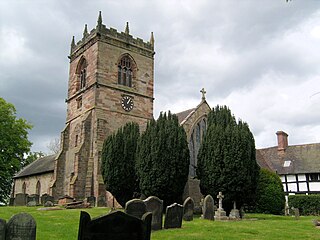 W
WLapley Priory was a priory in Staffordshire, England. Founded at the very end of the Anglo-Saxon period, it was an alien priory, a satellite house of the Benedictine Abbey of Saint-Remi or Saint-Rémy at Reims in Northern France. After great fluctuations in fortune, resulting from changing relations between the rulers of England and France, it was finally dissolved in 1415 and its assets transferred to the collegiate church at Tong, Shropshire.
 W
WMalton Castle was a castle in Malton, North Yorkshire, England. A wooden motte and bailey castle was built by William Tyson, lord of Alnwick in the 11th century, on the site of the Roman fort of Derventio Brigantum. The castle was given to Eustace fitz John, who rebuilt it in stone.
 W
WNorwich Market is an outdoor market consisting of around 200 stalls in central Norwich, England. Founded in the latter part of the 11th century to supply Norman merchants and settlers moving to the area following the Norman conquest of England, it replaced an earlier market a short distance away. It has been in operation on the present site for over 900 years.
 W
WNorwich School is a selective English independent day school in the close of Norwich Cathedral, Norwich. Among the oldest schools in the United Kingdom, it has a traceable history to 1096 as an episcopal grammar school established by Herbert de Losinga, first Bishop of Norwich. In the 16th century the school came under the control of the city of Norwich and moved to Blackfriars' Hall following a successful petition to Henry VIII. The school was refounded in 1547 in a royal charter granted by Edward VI and moved to its current site beside the cathedral in 1551. In the 19th century it became independent of the city and its classical curriculum was broadened in response to the declining demand for classical education following the Industrial Revolution.
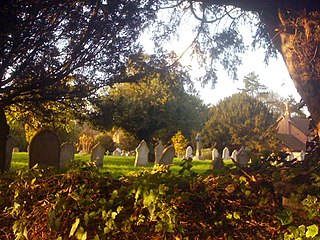 W
WSt Faith's Church was the parish church of St Cross, a village just south of Winchester, Hampshire, England. It was situated on the northern side of what is now Kingsgate Road at its junction with what is now St Cross Road. The church's graveyard is still there today. The church was demolished in 1507, and St Cross Church, part of the Hospital of St Cross, became the parish church.
 W
WThe Abbey of St Mary is a ruined Benedictine abbey in York, England and a Grade I listed building.
 W
WSt Michael at the North Gate is a church in Cornmarket Street, at the junction with Ship Street, in central Oxford, England. The name derives from the church's location on the site of the north gate of Oxford when it was surrounded by a city wall.
 W
WSt James Church is a Church of England church in School Lane, Quedgeley, Gloucester, Gloucestershire, England. It was designated as a Grade II listed building in January 1955.
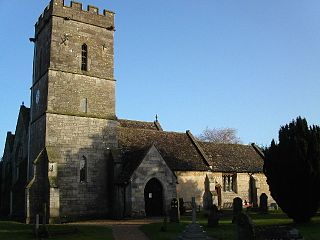 W
WSaint Nicholas Church is a grade I listed building located in Hardwicke, Gloucestershire. It practices Christianity through the Church of England denomination.
 W
WSt. Botolph's Priory was a medieval house of Augustinian canons in Colchester, Essex, founded c. 1093. The priory had the distinction of being the first and leading Augustinian convent in England until its dissolution in 1536.
 W
WThe University of Oxford is a collegiate research university in Oxford, Oxfordshire, England. There is evidence of teaching as early as 1096, making it the oldest university in the English-speaking world, the world's second-oldest university in continuous operation and one of the most prestigious academic institutions in the world. It grew rapidly from 1167 when Henry II banned English students from attending the University of Paris. After disputes between students and Oxford townsfolk in 1209, some academics fled north-east to Cambridge where they established what became the University of Cambridge. The two English ancient universities share many common features and are often jointly called Oxbridge.
 W
WThe White Tower is a central tower, the old keep, at the Tower of London. It was built by William the Conqueror during the early 1080s, and subsequently extended. The White Tower was the castle's strongest point militarily, and provided accommodation for the king and his representatives, as well as a chapel. Henry III ordered the tower whitewashed in 1240.
 W
WWindsor Castle is a royal residence at Windsor in the English county of Berkshire. It is strongly associated with the English and succeeding British royal family, and embodies almost 1,000 years of architectural history.
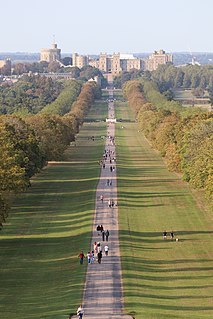 W
WWindsor Great Park is a Royal Park of 2,020 hectares, including a deer park, to the south of the town of Windsor on the border of Berkshire and Surrey in England. It is adjacent to the private Home Park, which is nearer the castle. The park was, for many centuries, the private hunting ground of Windsor Castle and dates primarily from the mid-13th century. Historically the park covered an area many times the current size known as Windsor Forest, Windsor Royal Park or its current name. The only royal park not managed by The Royal Parks, the park is managed and funded by the Crown Estate. Most parts of the park are open to the public, free of charge, from dawn to dusk, although there is a charge to enter Savill Garden.
 W
WThe Worshipful Company of Saddlers is one of the Livery Companies of the City of London. A Guild of Saddlers, the Company's predecessor, is thought to have been an Anglo-Saxon Craft Guild – it certainly existed at some point in the eleventh century. The Guild became a Company when a Royal Charter of Incorporation was granted by King Edward III in 1363. The City granted the Company the right to regulate the trade of saddle-making; all saddlers in and within two miles of the City were subject to the Company's regulations. However, the powers of the Company, which has existed on the same site at Cheapside since 1160, were eroded over time.
 W
WYork Castle is a fortified complex in the city of York, England. It consists of a sequence of castles, prisons, law courts and other buildings, which were built over the last nine centuries on the south side of the River Foss. The now-ruined keep of the medieval Norman castle is commonly referred to as Clifford's Tower. Built originally on the orders of William I to dominate the former Viking city of Jórvík, the castle suffered a tumultuous early history before developing into a major fortification with extensive water defences. After a major explosion in 1684 rendered the remaining military defences uninhabitable, York Castle continued to be used as a jail and prison until 1929.